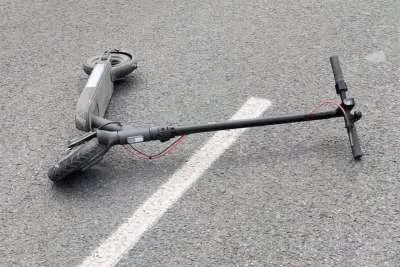How to read the internet without losing your head
- 24-10-2025
- Business
- collaborative post
- Photo Credit: Supplied
The online world grows louder by the hour. Headlines multiply, opinions pile into threads, and slick explainers rush to define what everything means. A person doesn’t need a journalism degree to stay sane and well-informed, but they do need a method.
Think of it as a daily routine for the mind: a handful of habits that help someone separate reporting from recycled takes, context from clickbait, and evidence from confident noise.
When a story starts trending or a too-neat quote ricochets across feeds, a careful reader pauses for a short check. If the text feels templated or oddly generic, they run a quick sniff test with an ai detector free tool and then line it up against one or two sources that cite documents, recordings, or named people. The goal isn’t to “catch robots,” but to protect attention so it lands on facts that matter.
Signals That Don’t Lie
Weak content tends to fail in predictable places: it hides who did what, where, and when; leans on vague experts; and avoids anything a reader could verify. Strong content does the opposite. Once a person trains the eye to notice these differences, half the junk falls away on sight.
Trust markers worth noticing
- Names and roles that can be looked up, with a link or reference to the original statement or file
- Dates that align across the headline, body text, and the actual event
- Plain descriptions of evidence with enough detail to retrace the steps
- Quotes that sound like a person speaking, not a slogan sanded smooth
Red flags that waste time
- Loud headlines that never answer who, where, and when
- Single-source screenshots with cropped edges and no path back to origin
- Charts without axes or units, or numbers with undefined terms
- “Experts say” with no names, institutions, or track records
Once these signals become familiar, scrolling changes. A person clicks less but understands more, exactly the point.
A Three Move Routine for Breaking Claims
Big stories evolve; early reports are messy. The smart aim isn’t to be first but to be right enough to act sensibly. This simple routine helps when a contentious claim hits the feed.
Move one: find the origin.
Follow links until the earliest credible source appears—a court filing, a corporate 8-K, a city agenda, an agency bulletin, or a primary interview. If the trail ends at a random account or content farm, that’s enough to classify the claim as unverified.
Move two: sync the clocks.
Pin down dates. Is the clip new or last year’s footage with a fresh caption? Did the policy change pass, or is it a proposal mid-debate? Many viral misunderstandings evaporate once the timeline is clear.
Move three: search for the refuter.
Type a phrase that would disprove the claim if true. If credible counterpoints surface quickly, from outlets that publish corrections and cite documents, scepticism is warranted. If nothing serious appears, the claim might hold, but it stays provisional until more reporting lands.
This routine takes minutes, not hours. It turns panic into patience and swaps hot takes for a calm sense of where the firm ground is.
Build A Feed That Serves the Reader
Algorithms reward reactions, not curiosity. Anyone who wants a clearer view of the world benefits from deliberate curation. A strong starting point is one daily briefing from an outlet that lists corrections and links to primary sources. To that, add two specialist writers who cover topics relevant to real life, health, energy, economics, tech, and people who show their math and share datasets. Finally, include one local source that tracks city budgets, transit, schools, or courts. Local reporting grounds national noise and reveals how policies land in the street.
On social, control the signal. Mute outrage merchants. Follow beat reporters and data-savvy analysts who explain the method as much as the conclusion. Keep lists of credible experts so updates can be checked without wading through the full feed. Save articles, not just takes, and revisit them a day later to see what held up and what fell apart.
The most consequential stories rarely fit a twenty-four-hour arc. Legal cases move through filings, hearings, and appeals. Scientific results mature through peer review and replication. Policy fights shift as drafts evolve and amendments appear. Instead of locking into a dramatic narrative, resilient readers hold a few measured beliefs and update them as better evidence arrives.
Useful prompts when a story is still forming: What would change the conclusion tomorrow? Whose voice is missing and likely to matter? Which details are confirmed, which are probable, and which are speculation? This stance doesn’t produce indecision; it produces durability. A person can act on the best available information without pretending it’s final.
A Tiny Toolkit with Outsized Impact
Verification doesn’t require an elaborate tech stack. A small kit, used well, beats a hundred tabs of hot takes.
- Reverse image search to spot reused or miscaptioned photos
- Public company filings and government budget portals for financial claims
- Legislative trackers and court dockets for bills and cases
- Archives of press rooms and agency bulletins for official statements
- A simple notes app to log sources, dates, and key quotes for later
Two browser habits amplify these tools: open links in new tabs to compare versions side by side, and skim the About, Masthead, and Corrections pages of unfamiliar sites. Credible publications are easy to inspect; low-quality ones hide behind generic names and opaque structures.
Treat Attention Like a Budget
Attention behaves like money: spend it and it’s gone. Investing it where it compounds changes outcomes. One solid explainer beats fifteen reactive threads. A primary document teaches more than a viral post that offers vibes without facts. Clarity reduces anxiety, too.
A healthy news practice isn’t joyless. It creates space for deeper engagement with issues that matter while ignoring churn designed to keep people agitated. Over time, patterns emerge. A reader starts recognising headlines that merely sparkle versus pieces that illuminate. Reporters who earn trust become familiar bylines. And when a storm of claims hits, that reader knows how to stand still until the signal separates from the noise.
The internet won’t quiet down. It doesn’t need to. With a few reliable signals, a three-move verification routine, a curated feed, and a tiny toolkit, any person can cut through the volume and keep their bearings. That isn’t cynicism. It’s calm, curiosity, and being hard to fool, the exact posture this moment rewards.
Other articles that may interest you...
Trending
Most Read Articles
1.
Featured Videos
A Vision of Elvis Tenerife Promo
- 10-05-2025
TEAs 2025 Highlights
- 17-11-2025



























































